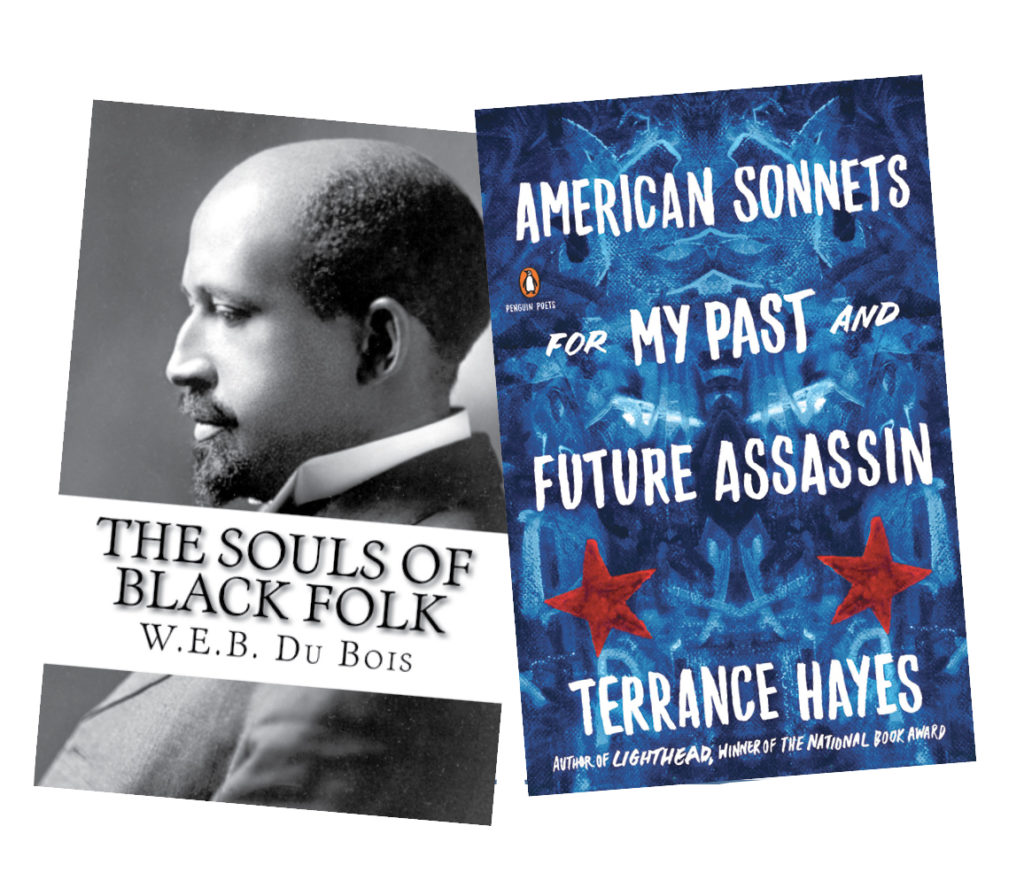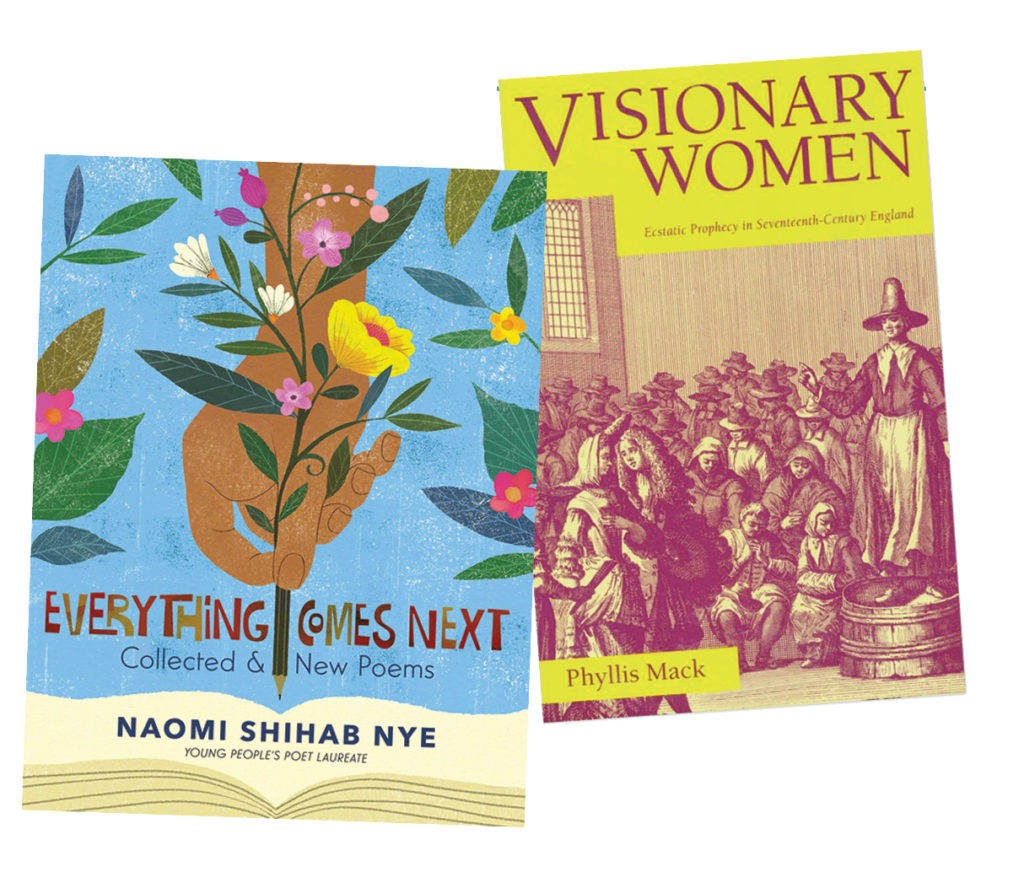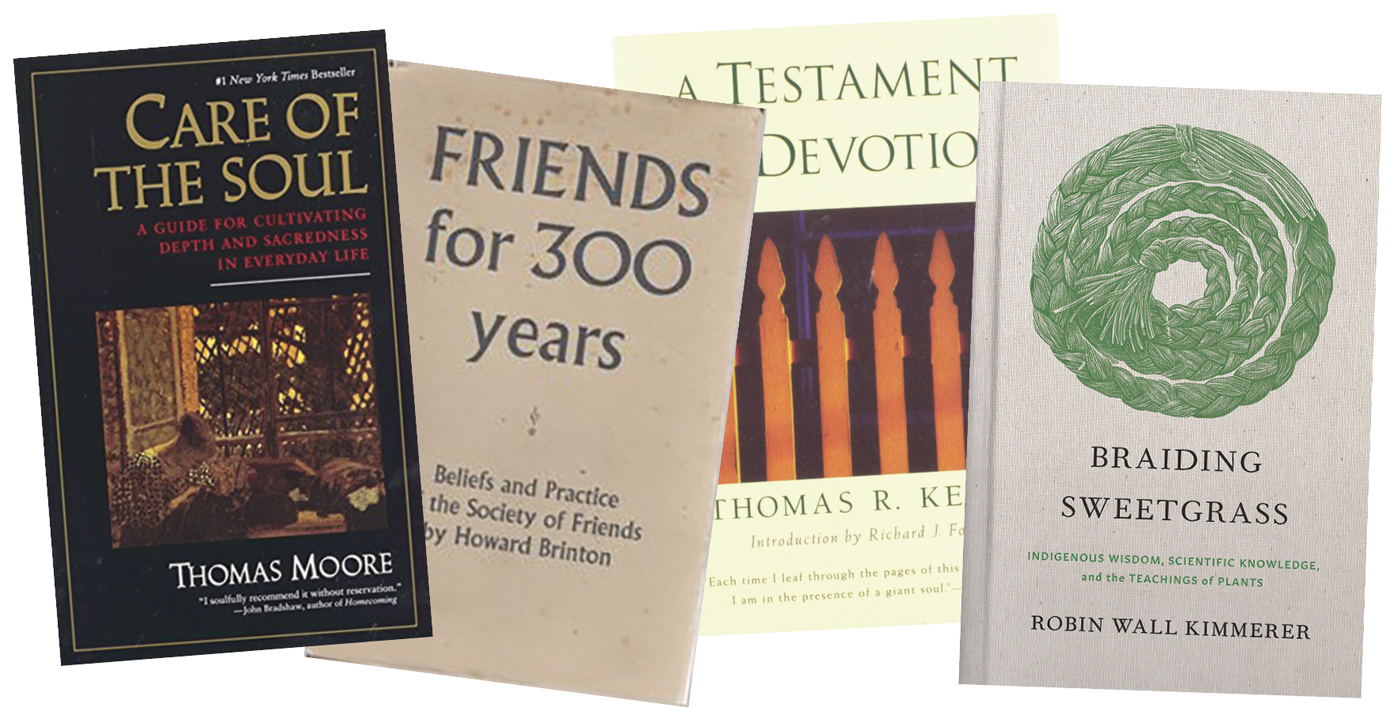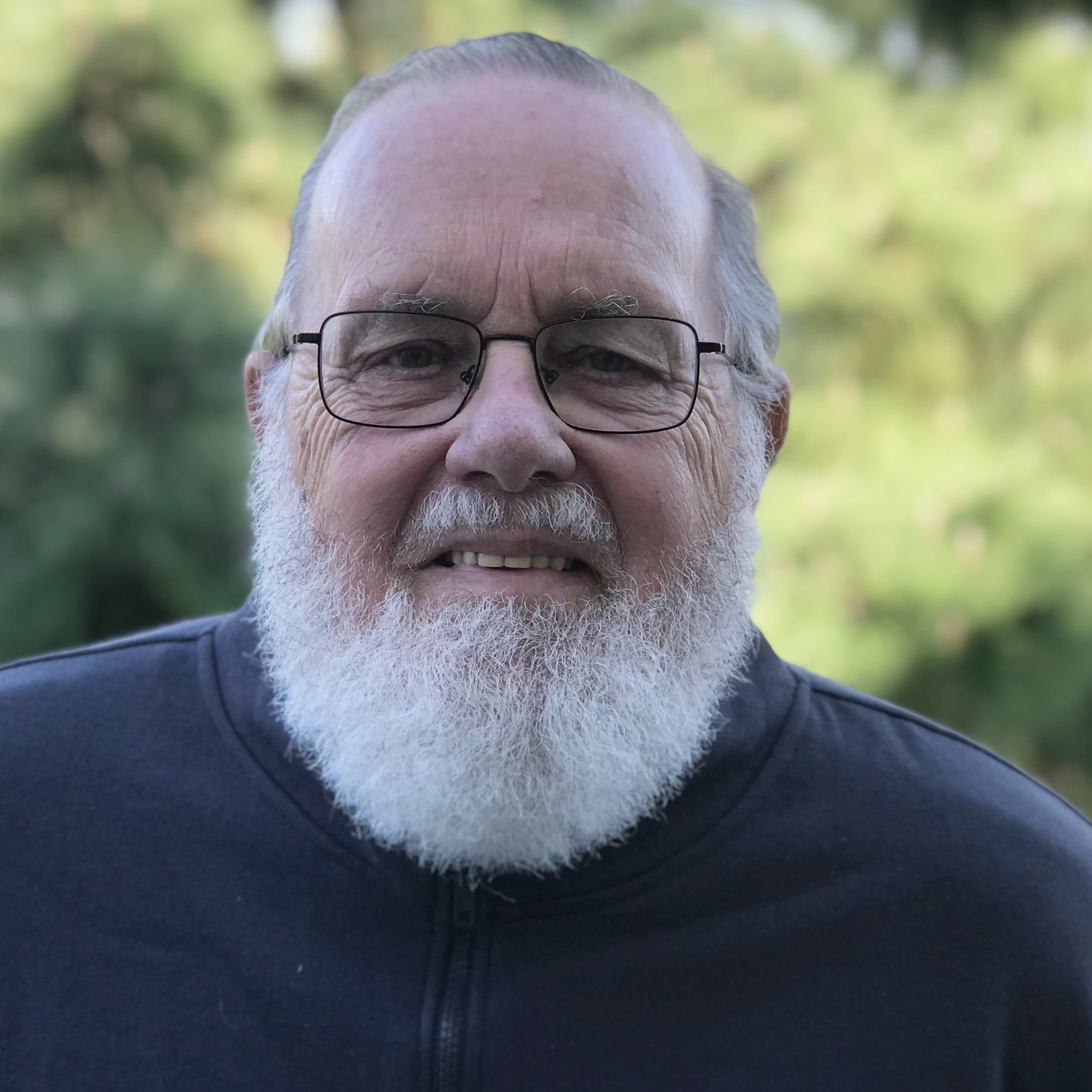Nearly ten years ago, we started monthly reading groups at Santa Monica (Calif.) Meeting by reflecting upon excerpts from classic Quaker devotional writings such as George Fox’s Journal, Thomas Kelly’s A Testament of Devotion, Howard Brinton’s Friends for 300 Years, and Margaret Fell’s Women’s Speaking Justified. We considered Swarthmore lectures such as Images and Silence by Brenda Clifft Heales and Chris Cook as well as various Pendle Hill pamphlets. Over the past three or more years, we read women’s writings, including a Tunisian American poet, Leila Chatti (writing about the Virgin Mary), and the poet Naomi Shihab Nye. We looked at poetry by Native Americans such as Sherman Alexie, Esther Belin, and Joy Harjo, and at Robin Wall Kimmerer’s Braiding Sweetgrass. We focused upon writings by African Americans such as Terrance Hayes and poets Lucille Clifton and Amanda Gorman, as well as other racially and ethnically diverse contemporary songs, poems, and writings.
Friends are hungry for spiritual practices that deepen one’s inner life. These practices draw us together in a creative community. They feel like there’s attention to the soul, both as individuals and connected to building community. These are communal spiritual practices that care for the soul.
In his Care of the Soul, Thomas Moore writes: “Let us imagine care of the soul, then, as an application of poetics to everyday life.” Poetry and related expressive writings allow access to the soul and its meanings. In poetry, its music is embedded in rhythm, repetition, and the breathing of line breaks, as well as in various forms, stanzas, and rhyme. Also, as Moore notes, the soul is a metaphor for the heart and its knowing. Soul power comes “from living close to the heart.”
These contemplative response groups become forms of ministry. We listen together to the poems or other passages and absorb one another’s reflections. It’s a musical dance among a text as we listen to the Spirit, filtered through the lives of the participants. This approach has its origins in silent worship. We wait upon the Spirit of the Living God. We pray to be led by and to submit to the Spirit’s presence in the moment; we create meanings together. We allow for the emergence of soul knowing. We pray to let arguments, competition, and judging dissipate if not to disappear.
In one of our recent sessions, we considered passages from W. E. B. Du Bois’s The Souls of Black Folk. Du Bois expresses how African Americans are “born with a veil,” and he names a traumatic “double-consciousness, this sense of always looking at one’s self through the eyes of others.” He continues, “One ever feels his two-ness . . . two warring ideals in one dark body.” This psychic, emotional, and racist conflict has great resonance, as Du Bois lays out the structural racism of being Black and American at the same time. It tears at the soul, and he comments: “He would not bleach his Negro soul in a flood of white Americanism.”

In another session, we looked at sonnets by Terrance Hayes. In one of the early sonnets from American Sonnets for My Past and Future Assassin, Hayes echoes this inner split and doubleness. Hayes starts this sonnet with these two lines: “I lock you in an American sonnet that is part prison, / Part panic closet, a little room in a house set aflame.” And then the poem ends: “Voltas of acoustics, instinct & metaphor. It is not enough / To love you. It is not enough to want you destroyed.”
Ironically, there’s a doubleness about this assassin. Hayes himself becomes the assassin. He’s locked inside the sonnet in “a little room in a house set aflame.” Then there’s the crushing truth in the last two lines as the poet both loves and wants to destroy this assassin, all-at-once. The psychic drama reveals both love and destruction, yoked together in the poet’s imagination.
In early 2021, we read two poems by Naomi Shihab Nye. In the final verse paragraph of her poem “Kindness,” Nye begins: “Before you know kindness as the deepest thing inside, / you must know sorrow as the other deepest thing.”
This poem helps us to hold a certain wisdom. Deepest sorrow accompanies and creates more wholeness. The two seeming opposites inform one another, as in the opening four lines from the same poem:
Before you know what kindness really is
you must lose things,
feel the future dissolve in a moment
like salt in a weakened broth
With this yoking together of the shadow sides of kindness, the speaker touches the reader, leading them more deeply into Nye’s own experience, urging depth in one’s spiritual journey.

From time to time, we revisited passages from Fox’s Journal. In one example, we looked at passages about how Fox preached repentance and climbed to the top of Pendle Hill in England and sounded “the day of the Lord” and had a vision of “a great people to be gathered,” turning people “to the light of Christ.” Participants in the session had a number of reactions and comments, including one that said: “I was looking for true Christianity as a teen and couldn’t find it, and I knew—reading Fox—that this was true; he had found it.”
In reflecting on these contemplative sessions, I notice that they encourage Friends to do some imaginative dives into the heart and soul of the matter. In the small group, participants feel safe and trust that they can speak and be vulnerable. The conversations also allow for multiple voices to be present and cherished, revealing a devotional stance at times. I view this as counter-cultural work, pushing back against assumptions that we must agree and come to some pre-ordained “right” answer.
As with worship sharing or silent worship itself, Friends practice how to be open to the workings of the Spirit, meaning that it’s okay to be instruments upon which the Spirit may write. Friends pay attention to meanings beneath the surface of ordinary consciousness. In Visionary Women, Phyllis Mack writes about seventeenth-century Friend Rebeckah Travers and how her words on ink and paper become “spirit, life, and power.” I pray that this potential for spiritual transformation about how the Spirit accompanies words continues to percolate in our imagination. I pray that we continue to love one another and discover channels for these collaborative spiritual journeys that open up to the soul and its meanings.





Comments on Friendsjournal.org may be used in the Forum of the print magazine and may be edited for length and clarity.